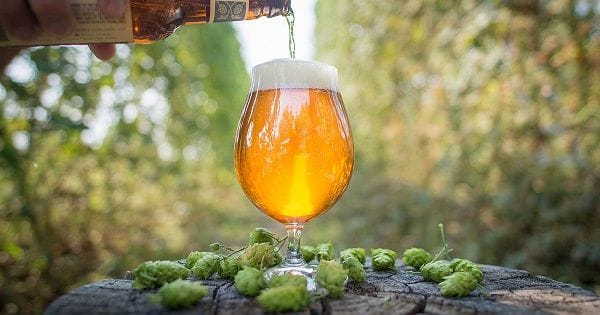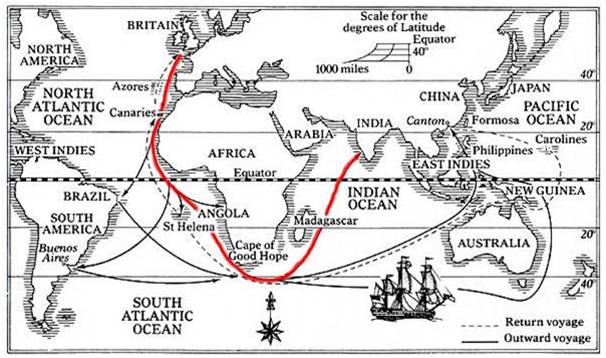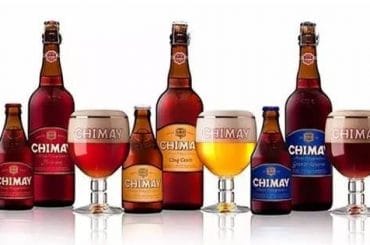This post is also available in:
Español
Português
The story behind the birth of the IPA (India Pale Ale) style is well-known, and a quick summary tells us that it is the evolution of an English ale designed to survive a long journey to India.

A journey from England through Africa, crossing the Equator twice, which required keeping supplies fresh and quenching the thirst of British troops in the colony at the end of the 18th century.
The Recipe for an English IPA?: More alcohol and more hops.
Almost two centuries later, American brewers, without the need for transcontinental trips, with refrigeration and pasteurization already invented (thanks to beer), revived and adapted the idea.
The recipe for this new American IPA? Much more hops, this time American, with double and triple versions. The rest of the story is more or less well known.
Contenido
What is IPA Day?
The idea was born with the help of social media in 2011, with Ashley Routson and Ryan Ross as its main promoters, quickly spreading globally as one of the most important beer style celebrations.

Later, in Spanish-speaking countries, it was the Chilean beer portal Beer Geeks, who first echoed this celebration in 2013 and spread the word through the burgeoning craft beer movement beginning to develop in these countries.
Why Do We Celebrate IPA Day?
IPA Day is a global movement created to unite the voices of craft beer lovers, content creators, and brewers around the world.

In short, it’s not an event created by corporate marketing from a large multinational brewery, nor is it aimed at serving any particular brand.
It’s an opportunity for all players in the craft beer culture to join forces and advocate for it through education and global consumption awareness.
When is IPA Day 2025?
As a rule, the IPA Day celebration date was established as the first Thursday of August each year, so for 2025, the date to remember is Thursday, August 7th.

Anyone can organize an event to celebrate IPA Day: breweries, beer gardens, brewpubs, restaurants, bars, beer stores, in your own home, or with your coworkers.
This upcoming Thursday, you can also share your photos, videos, articles, tasting notes, recipes, and reflections on its different versions worldwide.
Finally, you can tag your posts on social media such as TikTok, X, Instagram, Facebook, LinkedIn, Pinterest, or Reddit and others with the hashtag #IPAday and/or #IPAday2025.
Styles and Substyles of India Pale Ale
Currently, up to 10 different IPA styles can be distinguished, and below we share a brief overview of their main characteristics.
1. English IPA
A British pale ale, hoppy, moderately strong, well-attenuated, with a dry finish and a hop aroma and flavor. Classic British ingredients provide the distinctive flavor profile.
2. American IPA
A decidedly hoppy and bitter American Pale Ale, moderately strong, showcasing varieties of modern American hops. The balance leans toward the hops, with a clean fermentation profile, dry finish, and supporting malt that allows a broad hop character to shine through.
3. Double IPA
A fairly strong pale ale, intensely hopped, although without the complex maltiness, residual sweetness, and body of an American barleywine. Strongly hopped but clean, dry, and without rough edges. Drinkability is an important feature, as it shouldn’t be a heavy beer.
4. Belgian IPA
An IPA with fruity and spicy character derived from the use of Belgian yeast. Classic examples tend to be lighter in color and more attenuated, similar to a more hoppy tripel.
5. Black IPA
A beer with the dryness, hop-forward balance, and flavor characteristics of an American IPA, but darker in color, without strong roasted flavors. The flavor of darker malts is soft and supportive, not a major flavor component.
6. Brown IPA
Like an American IPA, hoppy, bitter, and moderately strong, but with some caramel, chocolate, toffee, and/or dark fruit character from the malt. It retains the dry finish and lean body that makes IPAs so drinkable, a little more flavorful and malty than an American IPA, without being sweet or heavy.
7. Red IPA
Like an American IPA, hoppy, bitter, and moderately strong, but with malt character from caramel, toffee, and/or dried fruits. It retains the dry finish and body that makes IPAs so drinkable, a little more flavorful and malty than an American IPA, without being sweet or heavy.
8. Rye IPA
A decidedly hoppy and bitter American Pale Ale, moderately strong, showcasing varieties of American hops and rye malt. The balance leans toward the hops, with a clean fermentation profile and a dry finish, with supporting malt that allows a creative hop character to shine through.
9. White IPA
A fruit-forward, spicy, and refreshing version of American IPA but with a lighter color, less body, and offering a distinctive addition of yeast and/or spices typical of Belgian witbier.
10. Hazy IPA
An IPA with intense fruity flavors and aromas, a smooth body, and a fluid mouthfeel, often hazy with substantial turbidity. The emphasis on late hops, especially dry hopping, with hops featuring tropical fruit qualities, gives it the “juicy” character for which the style is known.
Frequently Asked Questions (FAQ)
What role does the hop profile play in each substyle?
The choice of specific hop varieties defines aromatic expressions that range from citrus notes to intense tropical fruits, resins, pine, or even floral and earthy touches. For example, in a West Coast IPA, resinous and bitter hop profiles dominate, while in a New England IPA, hops with essential oils that favor the juicy, hazy, and exuberant character are preferred.
How does the alcohol content affect the balance of an IPA?
It influences the body and the perception of residual sweetness that counters the bitterness of the hops. A well-balanced IPA has enough malt backbone to support the hop profile without becoming astringent or unbalanced.
What modern techniques are used in IPA brewing?
Modern IPAs use techniques such as cold dry hopping, the use of cryogenic hops, and late hop additions in the whirlpool to maximize aroma and flavor without adding excessive bitterness. This is key in styles like Hazy IPA or Cold IPA.
What is the impact of water on the expression of hops?
The mineral composition of water, particularly the ratio of sulfates to chlorides, affects the sharpness of bitterness and the perception of body. Water with a high sulfate content enhances bitterness and dryness.
How does freshness influence the sensory experience?
IPAs are highly sensitive to aging and oxidation. The hop aroma quickly fades, making freshness critical. Ideally, an IPA should be consumed within 30 to 45 days of packaging to fully enjoy its sensory attributes.
No se encontraron productos.







